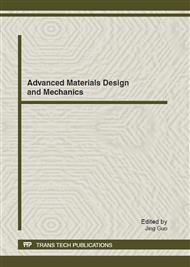p.264
p.268
p.273
p.277
p.282
p.286
p.290
p.297
p.301
Production of Carbon Dioxide Snow by Flash-Atomization for Material Cleaning Process
Abstract:
This paper investigates the production of CO2 snow by flash-atomization of liquid carbon dioxide for material cleaning process. The evolution of flash-atomization processes was recorded by means of high-speed shadowgraph. Results shows that the degree of superheat condition of liquid CO2 greatly influence the atomization modes, bobbles growth rate and concentration, and thus result in difference spray angle, spray pattern, and the structure of liquid jet which is suitable for different material cleaning applications. It is found that the spray angle first slowly increases with increase in the degree of superheat (ΔT) under external flash atomization processes. It is increased drastically as the spray transform from external-flashing to internal-flashing mode. Finally the spray angle is decreased again because of the decrease of mass flowrate due to the internal flashing processes . Moreover, the spray angle is increased as the length-to-diameter ratio (L/D) is increased. This is due to the higher bobble growth rate in terms of different pressure distribution and bobble growth time. It is also found that the external-flashing disappears at higher L/D because of the heat transfer to the liquid carbon dioxide. It is concluded that the superheated condition is useful in the control of the spray angle for material cleaning processes.
Info:
Periodical:
Pages:
282-285
Citation:
Online since:
September 2012
Authors:
Keywords:
Price:
Сopyright:
© 2012 Trans Tech Publications Ltd. All Rights Reserved
Share:
Citation:


